Daydream View review: A mobile VR headset you'll actually want to wear
It's comfortable and capable. Google's Daydream View VR headset is a hit.

Daydream View is the best mobile VR headset around, it's comfortable and intuitive, with plenty of fun experiences. Still can't match Vive, Oculus and PSVR.
-
+
Comfortable
-
+
Intuitive
-
+
Good 'experiences'
- +
-
-
Dust on lens
-
-
Not as capable as 'proper' VR
-
-
Questions about durability
Why you can trust T3
Daydream View is Google's new VR headset. We had a demo of it at the #MadeByGoogle event (where we also saw new Pixel phones, plus more info on Google Home and Assistant as well as a new Chromecast Ultra), and we’ve been playing with it for the past couple of days.
Costing $79 in the US and £69 in the UK, Daydream View will be available to buy today!
Daydream View is similar to Samsung's Gear VR in that you're using a phone to power the experience alongside a 'dumb' headset.
There are 50+ 'experiences' coming to the system before the end of the year including apps and games. These include YouTube, Guardian VR, New York Times VR, WSJ VR, Netflix, Wonderglade and Lego. Hulu will also be available for it in the US.
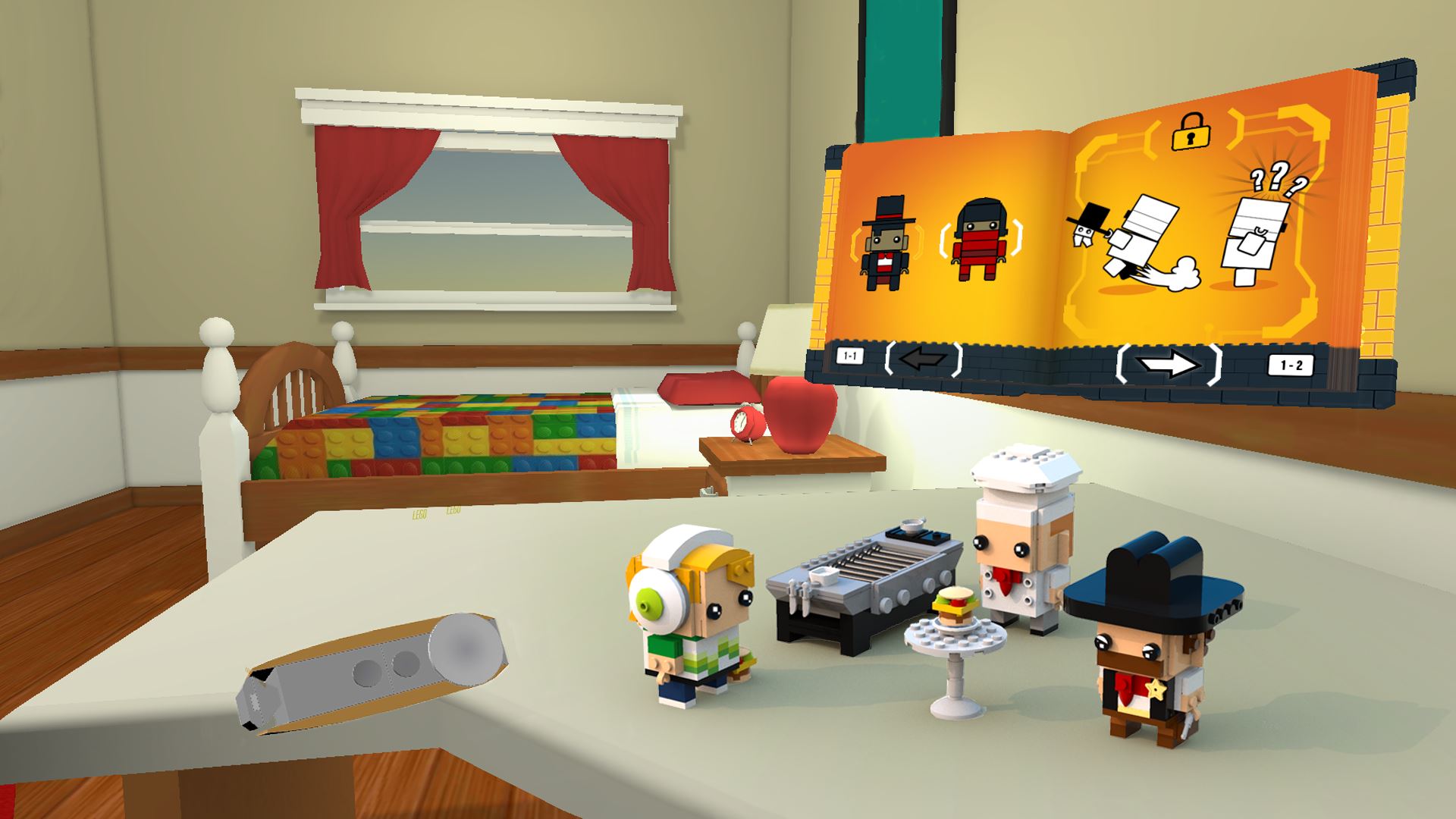
There's also JK Rowling's Fantastic Beasts and Where to Find Them - a lot of people are getting rather excited about the prospect of this in VR.

Google enlisted an unnamed clothing manufacturer when designing the headset and the material design (no, not THAT material design) clearly shows. Two buckles at the back enable you to adjust the headset to fit and it will be available in three colours, though there's only 'slate' around for now.
It's what makes Daydream View so comfortable, but we have to say it will definitely mark and wear over time. Mind you, how much time do you reckon you'd actually spend in VR? The jury's still out on this one.
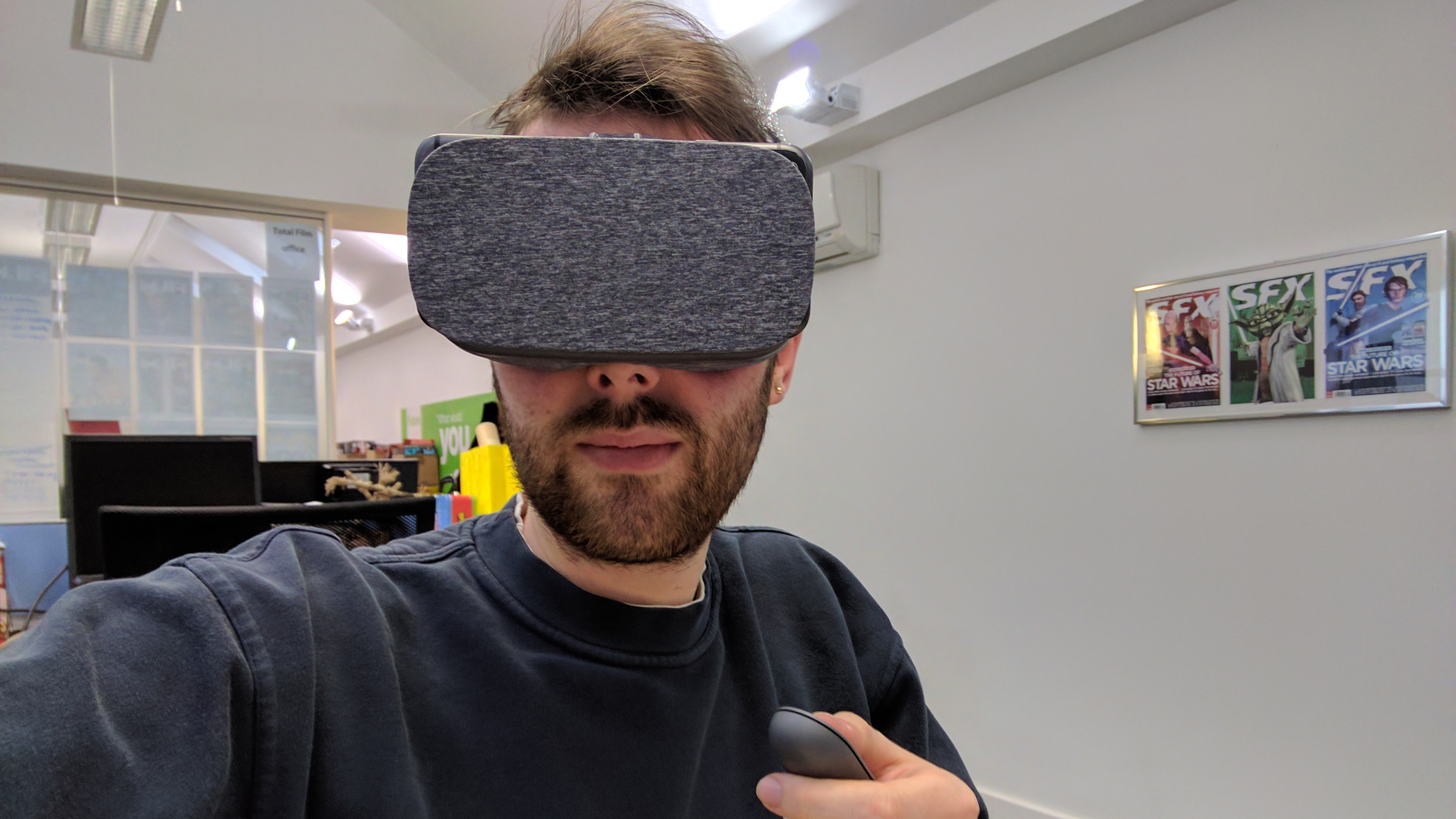
It is mega comfortable though and there's even some give in it. It is WAY more comfortable than Gear VR, for example and is more like putting on a pair of swimming goggles than a heavy headset.
Of course, there is still a fair amount of weight there, because youy're strapping a phone (in our case, the Pixel XL) to your face. Phones need to be Daydream-certified by Google, so you can't use any old phone (we tried putting an Samsung S7 Edge in there and a message pops up stopping you from running any VR apps).
Expect more and more to support it in the months to come. The phone straps into the headset via an elasticated band and is easy to fix in and release. Little rubber nipples stop it from sliding out (we tried violently shaking it out to no avail), but this system does allow dust to land on the lens. This means you’ll probably need to give it a clean every so often.
Control of Daydream View is via a simple remote pointer (a bit like a Wii Remote), with a push-to-select button as part of a trackpad, a home button and volume on the side. This was brilliantly responsive with no latency that we could detect.
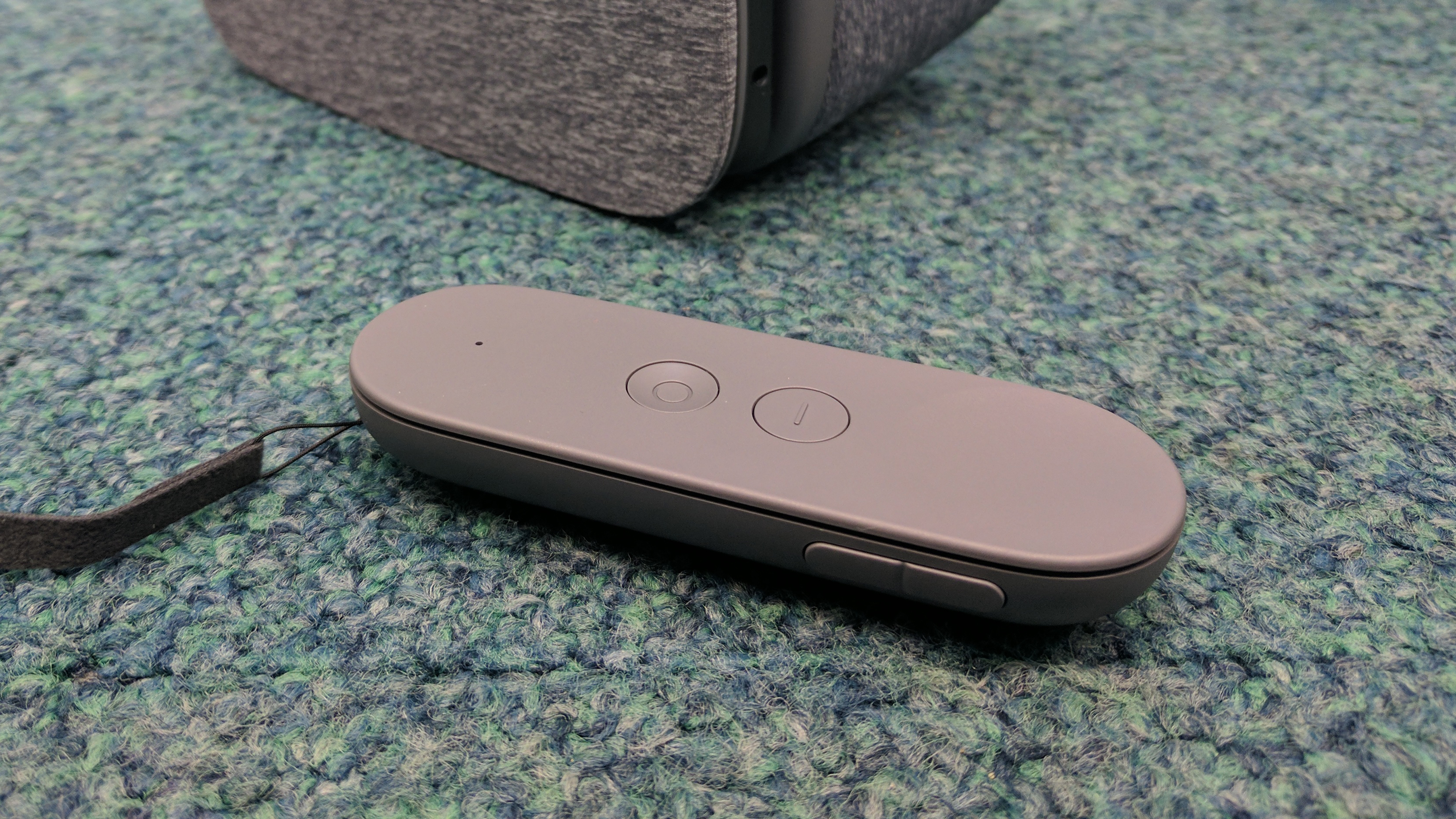
A nice touch is that the remote stows inside the empty headset for ease of transportation. In-flight VR, anyone?
No calibration is needed; the phone does that for you and it detects the headset via NFC. We enjoyed using it and it was really very simple. No learning curve whatsoever.
In terms of quality, things are actually really good for the price. After he'd heard that I'd tried Google Cardboard as well as HTC Vive and Gear VR (no, I haven't used an Oculus Rift, sorry) our demo man was quick to allude to the fact I shouldn't expect an experience like Vive but that it was a step up from Cardboard.
So far, as expected.First, was a VR experience from YouTube featuring the Museum of Natural History. This shows animals coming to life and, while it isn't as good as some somewhat more immersive animal-based VR demos we've seen, it was pretty cool all the same.
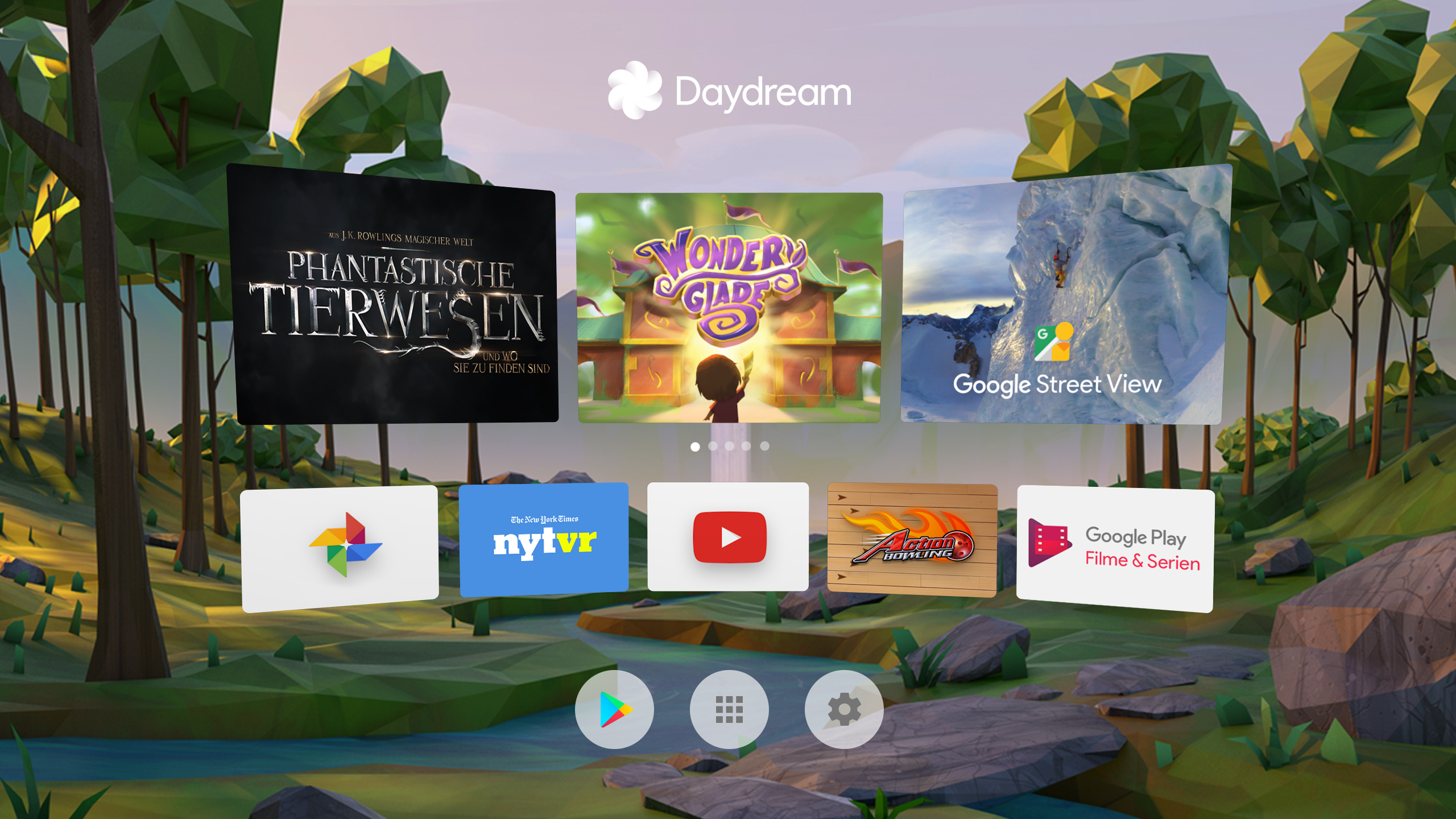
This is what the home screen looks like, it’s really beautiful, by the way, note there's a link to the Play Store at the bottom. You don't need to take your phone out from the headset in order to browse the store.
Next, we tried out WonderGlade from Resolution Games, which is basically a VR theme park described as “a whole world of carnival-themed gameplay”. We tried a rolling ball game using the controller. It was all very natural to use and we got the hang of it pretty quickly.
This is what the main WonderGlade screen looks like, from where you select which game you want to play.
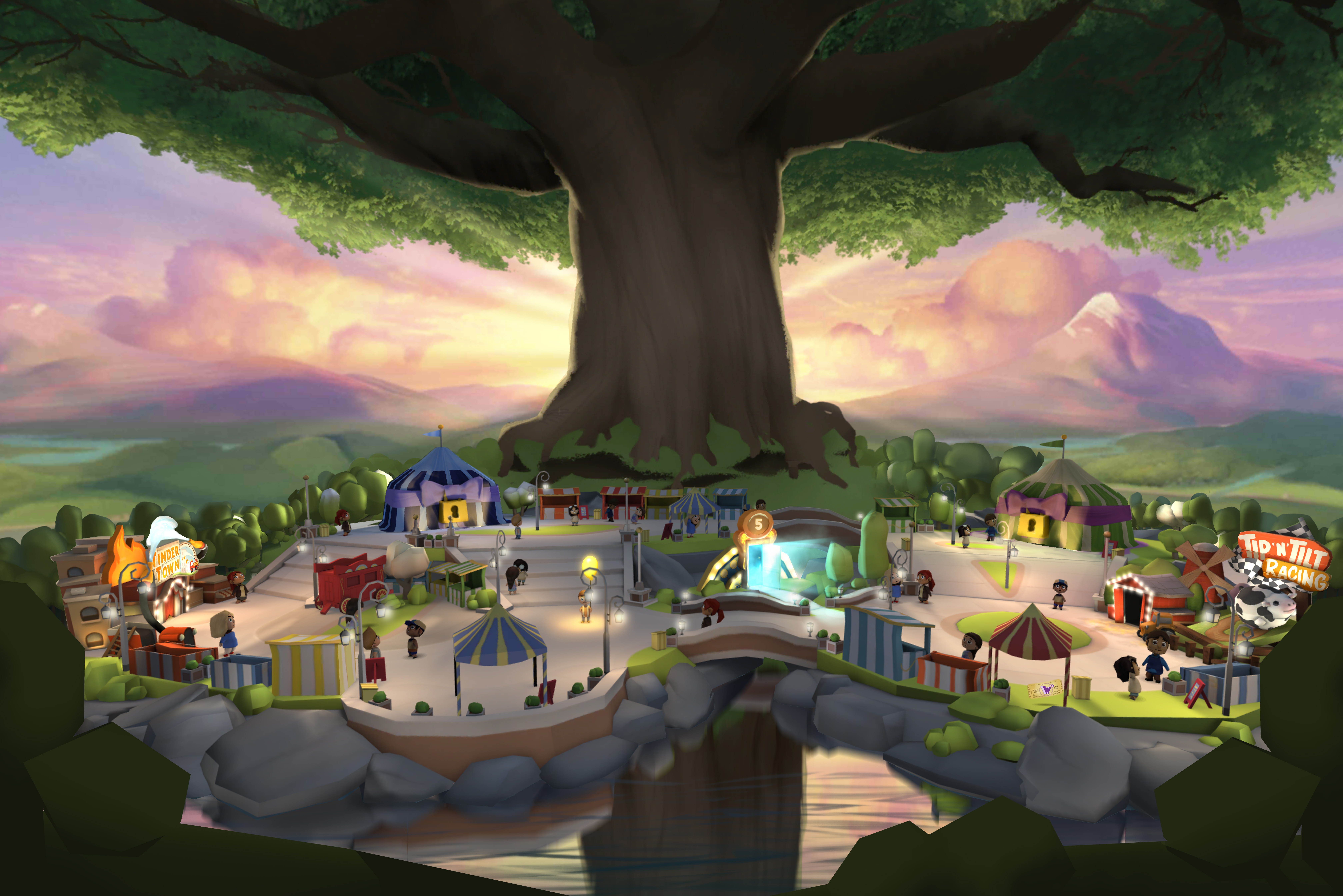
We’re also tested Google Street View, it's cool, but won't keep you entertained for long.
Our favourite experience was VR Karts, basically a virtual reality Mario Kart. It's super fun, and almost worth the £69 just for this game.
After playing around in Daydream for a while it's worth noting that the Pixel gets very warm. We'd suggest not using a case, otherwise your smartphone could overheat.
Verdict
So what did we make of Daydream View? Well, it’s certainly a very comfortable experience and it worked fine with our glasses and we can see it definitely appeal.
It has it's flaws, the biggest being the amount of dust that can settle on the lens, and we have questions about its long term durability.
Obviously, resolution is going to depend on what smartphone you use with the headset. The Pixel XL does a decent job, but it’s not quite as sharp as the S7 Edge in Gear VR. But if you’re not comparing these back-to-back, that’s not really a problem.
We've seen with other platforms that games and apps have been limited and we're hopeful that Google can crack this – it's certainly got some decent names on board already, and we’re looking forward to seeing this expand.
It's certainly the first VR headset we can see ourselves using over and over again.
Liked this?
Check out VR headset smackdown: HTC Vive vs Oculus Rift vs PlayStation VR
Sign up to the T3 newsletter for smarter living straight to your inbox
Get all the latest news, reviews, deals and buying guides on gorgeous tech, home and active products from the T3 experts
Dan is a previous Editor for T3.com and covered the latest in computing, home entertainment and mobile tech. He's also the former Deputy Editor of TechRadar and former Editor of Lifehacker UK. Dan has written for numerous computing and lifestyle magazines and has also written a book, too. You'll see him pop up in numerous places, having been quoted in or on The Sun, BBC World Service, BBC News Online, ITN News, BBC Radio 5Live, BBC Radio 4 and Sky News Radio.
-
 Polar’s new subscription feature lands in the shadow of Garmin’s Connect+ rollout
Polar’s new subscription feature lands in the shadow of Garmin’s Connect+ rolloutPR genius or timing disaster? Polar’s new Fitness Programme adds adaptive training to its ecosystem
By Matt Kollat Published
-
 New Orient Star watches offer a glimpse of the magic within
New Orient Star watches offer a glimpse of the magic withinThere are two new skeleton pieces
By Sam Cross Published
-
 Netflix's most surprising 100%-rated sci-fi series returns with gorgeous trailer
Netflix's most surprising 100%-rated sci-fi series returns with gorgeous trailerLove Death + Robots is back for more
By Max Freeman-Mills Published

